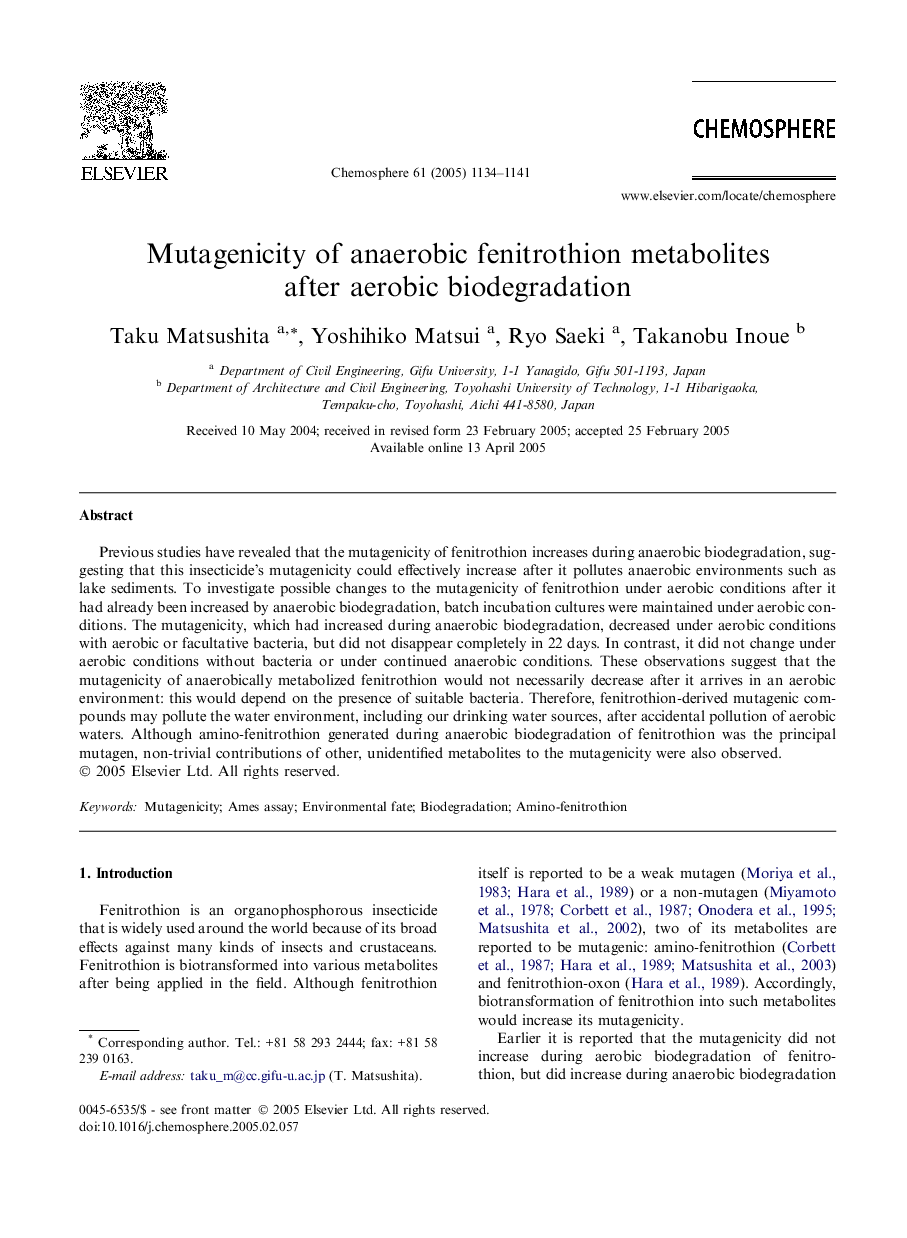| Article ID | Journal | Published Year | Pages | File Type |
|---|---|---|---|---|
| 9451398 | Chemosphere | 2005 | 8 Pages |
Abstract
Previous studies have revealed that the mutagenicity of fenitrothion increases during anaerobic biodegradation, suggesting that this insecticide's mutagenicity could effectively increase after it pollutes anaerobic environments such as lake sediments. To investigate possible changes to the mutagenicity of fenitrothion under aerobic conditions after it had already been increased by anaerobic biodegradation, batch incubation cultures were maintained under aerobic conditions. The mutagenicity, which had increased during anaerobic biodegradation, decreased under aerobic conditions with aerobic or facultative bacteria, but did not disappear completely in 22 days. In contrast, it did not change under aerobic conditions without bacteria or under continued anaerobic conditions. These observations suggest that the mutagenicity of anaerobically metabolized fenitrothion would not necessarily decrease after it arrives in an aerobic environment: this would depend on the presence of suitable bacteria. Therefore, fenitrothion-derived mutagenic compounds may pollute the water environment, including our drinking water sources, after accidental pollution of aerobic waters. Although amino-fenitrothion generated during anaerobic biodegradation of fenitrothion was the principal mutagen, non-trivial contributions of other, unidentified metabolites to the mutagenicity were also observed.
Related Topics
Life Sciences
Environmental Science
Environmental Chemistry
Authors
Taku Matsushita, Yoshihiko Matsui, Ryo Saeki, Takanobu Inoue,
